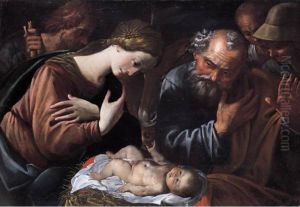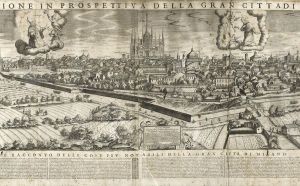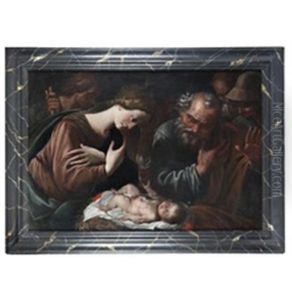Giovanni Francesco Lampugnani Paintings
Giovanni Francesco Lampugnani was an Italian composer and violinist who was active during the Baroque period. Born in Milan in 1651, Lampugnani is recognized for his contributions to the development of Italian instrumental and vocal music in the late 17th and early 18th centuries.
Lampugnani's musical career was primarily centered in Milan, where he worked at the prestigious Milan Cathedral as a violinist and later as a composer. He was part of a vibrant musical scene and was contemporary with other notable composers such as Arcangelo Corelli and Alessandro Scarlatti, who were also defining the musical landscape of Italy during this time.
Although Lampugnani's works were not as widely known as some of his contemporaries, he composed a variety of pieces, including operas, oratorios, and instrumental music. His compositions reflect the characteristics of the Baroque style, including the use of basso continuo and the emphasis on expressive melodies and harmonies. Lampugnani was also known for his ability to blend the traditional Italian style with emerging trends, which often included the incorporation of more dramatic elements into his works.
Giovanni Francesco Lampugnani passed away in 1726. While his music may not have achieved the enduring fame of some of his peers, his contributions to the Italian Baroque tradition were significant during his lifetime. Unfortunately, much of Lampugnani's music has been lost or remains unpublished, which has contributed to his relative obscurity in the history of music. Nonetheless, he remains a figure of interest to scholars and enthusiasts of the Baroque era, particularly in the context of the Milanese musical environment of the late 17th and early 18th centuries.


